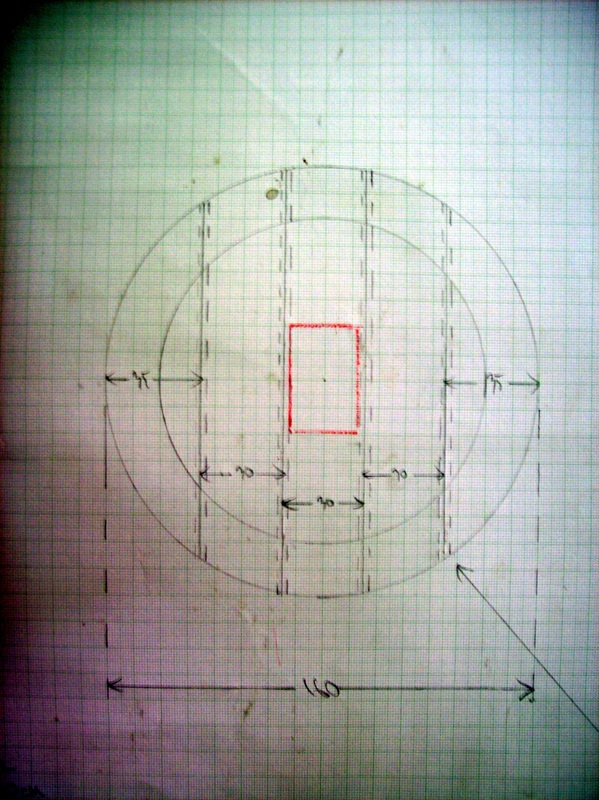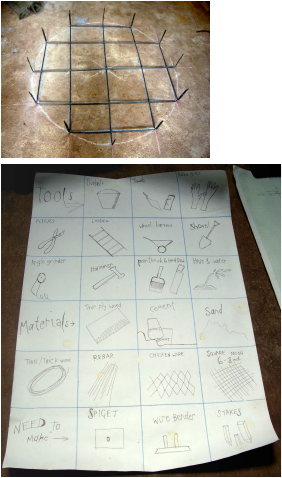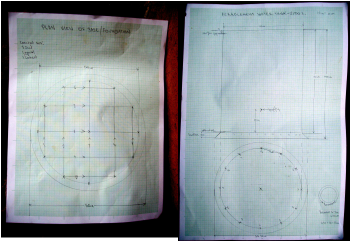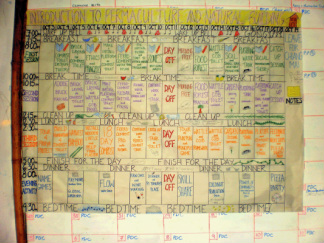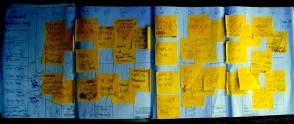Design
Designing the Compost ToiletDesigning the toilet had begun several months prior to the actual implementation phase. It began with Matt and I discussing the possibility of building a compost toilet in a similair style to our neighnour Pun Puns toilet. We'd both seen and loved pun puns toilet and were keen on building one ourselves after having identified the need for a new toilet at Panya as a high priority. The idea for the roof came from our other neighbour Ryan's toilet. We decided to add a solar chimney as a design element to help alleviate odours and ventilate the toilet (the solar chimney consists of a black-painted chimney. During the day solar energy heats the chimney and the air within it, creating an updraft of air in the chimney. The suction created at the chimney's base can be used to ventilate the composting chamber). |
Designing the Ferrocement Tank
The design of the ferrocement tank was based largely on the design of the ferrocement tank that was built previously at Panya. In Early 2011 A ferrocement tank was built at Panya during a workshop run by Matt Prosser and Geoffroy Godeau. The tank was built over a two week period by Matt, Geoff, the course participants and some of the long-term community members including myself. After receiving great feedback from the course participants and after having evaluated the functionality of the tank and enjoyed the delicious water it has provided us with for the past few months we decided to build another tank in the same location (right next to the old tank) to increase our water security and provide a greater capacity of drinking water in a more convenient loction for the long-term residents at Panya. One great technique that Geoff came up with on the previous course was to draw the plan of the tank to scale (with chalk) on the floor of the garage. This proved to be an invaluable tool for helping us to measure the rebar and cut it to size. |
Designing the Introduction to Permaculture
This was my first time teaching an introduction to permaculture course and I was a bit nervous. However Matt had already taught an intro course before so I was very lucky to have his extra experience in helping to design and organise the workshop. We started off by drawing out a rough schedule on an A3 piece of paper (showing a rough time-frame for the course). We used post-it notes to write out all the potential sessions that we would teach or run during the workshop and then we arranged them on the scedule sheet, discussing as we went along, which sessions would fit best where, what would be better at the start of the course and what might be better left until closer to the end, where we should fit in the catch-up sessions, where students might best appreciate having a day off etc. We continued this process until we were satisfied that all the sessions felt as though they were in the correct order and there was a good flow to the course. We also designed in evening sessions, every other night, including, documentaries (relevant to the course), skill share, Wine, yoghurt and cheese making etc. |

